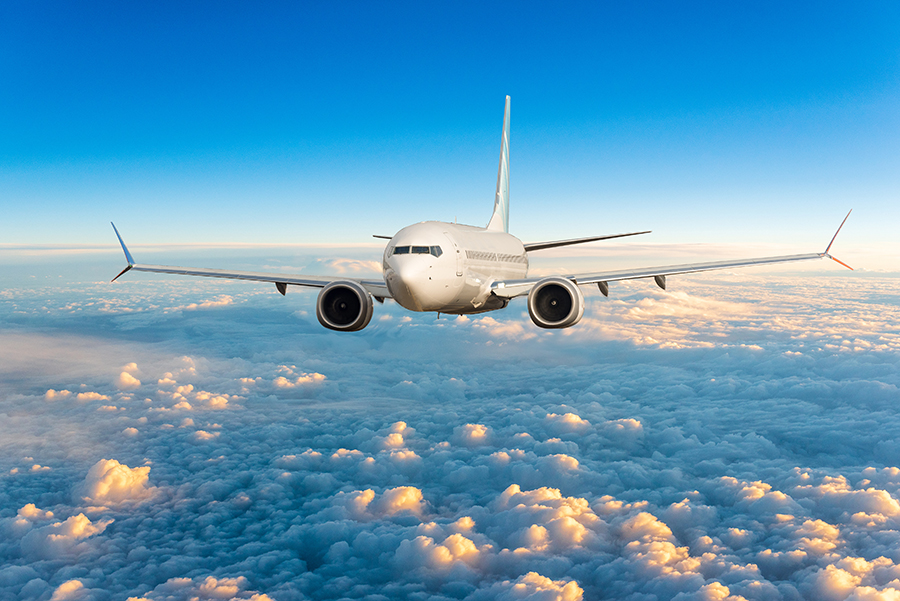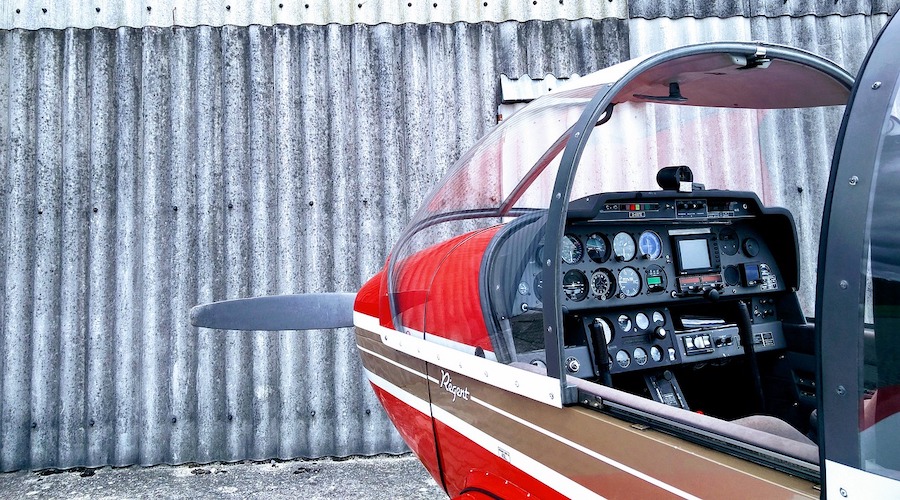-
Standard Weights for Aircraft Weight and Balance - Quick Reference Table
- How to Calculate Aircraft Weights Using the Above Table
- Why Do Different Liquids Weight Different Amounts?
- Why Do Standard Weights Include Temperature Data?
-
The Effects of Weight and Balance on Aircraft Behavior - 10 Things to Consider
- Structural Limitations
- Fuel Efficiency and Range
- Stall Speed
- Handling Characteristics
- Takeoff Distance
- Landing Distance
- Maximum Altitude
- Rate of Climb
- Rate of Turn
- Airplane Stability
-
Standard Weights in Aviation - Why Do We Use Them?
-
Aircraft Standard Weights - Commonly Used Terms
- Center of Gravity
- Datums
- Delta
- Dry Operating Weight (DOW)
- Index
- Max Landing Weight (MLW)
- Maximum Takeoff Weight (MTOW)
- Maximum Zero Fuel Weight (MZFW)
- Mean Aerodynamic Chord
- Moment Arm
- Standard Weights
- Specific Gravity
- Useful Load
-
How are Weight and Balance Calculated Using Standard Weights?
-
Where Can I Learn More About Aircraft Weight and Balance?
-
Final Thoughts
To fly safely, aircraft must be balanced and loaded correctly. Imagine if, before every flight, you had to weigh everything onboard. Fortunately, we don’t have to do this. Why? Because we use standard weights when calculating aircraft weight and balance. Today we will talk you through how aircraft loads are calculated, explain the general concept, and discuss factors that affect aircraft weight and balance.
Let’s dive right in.
Standard Weights for Aircraft Weight and Balance – Quick Reference Table
The weight of several things carried aboard the aircraft can be easily computed using standard weights. Below, you’ll find a quick reference table detailing standard weights used in aviation. You can use these to calculate the weight of fluids carried aboard the airplane:
| Type | Pounds Per USG (32°F) | Pounds Per USG (59°F) |
| AVGAS | 6.14 | 6.01 |
| JET A | 6.75 | 6.68 |
| JET A1 | 6.75 | 6.68 |
| Water | 8.35 | 8.33 |
| Oil | 7.5 | 7.43 |
How to Calculate Aircraft Weights Using the Above Table
Calculating liquid weights is really simple. It involves a little basic math. All we need to do is multiply the total number of gallons on board the aircraft by the weight, considering the temperature.
So, using the above table, let’s assume we have loaded 50 gallons of avgas onto our airplane. It looks something like this:
Total Fuel Weight = Volume (in USG) x Weight Factor
Total Fuel Weight = 50 x 6.01
Total Fuel Weight = 300lbs
Simple, right?
Why Do Different Liquids Weight Different Amounts?
Different liquids weigh different amounts based on their density.
It works using the following equation.
- Density = Mass / Volume
Don’t worry. We won’t get too scientific.
Generally speaking, every liquid has a different number of molecules based on a given set volume. The more molecules, the more the liquid weighs. To put it in technical terms, heavier liquids have a higher density. This is called specific gravity.
And get this.
You might be surprised to learn that a set volume of fuel, oil, and even alcohol and milk, weigh less than the same volume of water.
Don’t believe us? Use the table above using our calculation formula for ten gallons of water and then compare it to ten gallons of oil!
Why Do Standard Weights Include Temperature Data?
The eagle-eyed among you may have noticed that there are two columns, giving different values depending on temperature.
Why is this?
Well, to cut a long story short…
When calculating airplane mass and balance, we are primarily interested in weight, not volume. Unfortunately, a gallon is a measure of volume. ‘Volume’ is the total area a given fluid takes up in space.
Remember how we said fluids weigh different amounts based on their density?
Well, this density (the number of molecules in a given volume of fluid) changes based on the temperature of that fluid.
As a general rule, you need to remember this…
- The warmer a fluid, the less dense it will be.
- The colder a fluid, the denser it will be.
Why?
The volume of most fluids changes based on temperature. Avgas and Jet kerosene both expand as they get warmer.
Remember the above equation?
- Density = Mass / Volume
If the volume goes up, that means the mass is divided by a greater number, making the density less. While you may not think this is significant, a relatively minor temperature change can make all the difference. This is especially true when uplifting large volumes of liquids.
The Effects of Weight and Balance on Aircraft Behavior – 10 Things to Consider
Standard weights are vitally important to safe flight.
Also, according to Title 14 of the Code of Federal Regulations, you must familiarize yourself with the aircraft’s gross weight.
There are many things that are significantly affected by the weight of the aircraft, so getting to grips with mass and balance is really key. Here are several areas that are affected by aircraft weight and balance: –
Structural Limitations
Every airplane will be designed with certain weight limitations in mind. The weight on the gear and the forces generated while maneuvering is based on well-defined tolerances.
Increased weight leads to increased stress on the aircraft. Too much weight will lead to too much stress, which isn’t good!
Fuel Efficiency and Range
If you’ve read our article on flight forces, you’ll already know that to maintain level flight, lift must overcome weight.
In a nutshell…
More weight means more lift.
Lift creates an interesting byproduct…
Drag.
We need to create more thrust using the airplane engine to overcome drag.
More thrust equals more fuel used! So, it is safe to say that a heavier aircraft will be less fuel-efficient and have a shorter range!
Stall Speed
There comes the point when the wing will stop producing lift and become less efficient.
In aviation, we call this a stall (we recommend learning more about stalls).
The speed at which the aircraft stalls is influenced by the weight.
In simple terms?
The heavier the airplane, the sooner we reach the stall. So, it is vital to know how much the airplane weighs.
Handling Characteristics
The airplane is maneuvered around the center of gravity.
This is the pivot point of the aircraft.
Let’s keep it really straightforward…
The further a force is applied from a pivot point, the greater its effect.
The center of gravity is directly affected by where the mass is located on the airplane. By moving and changing the center of gravity, we can ensure that we get optimum handling characteristics.
Takeoff Distance
As we’ve already stated, the lift must exceed the weight for an airplane to fly. As lift is a function of airspeed, it would be fair to say that we need to fly faster to get airborne when taking off if we have increased weight.
If we have to fly faster, we will need a longer runway.
Landing Distance
Airplane brakes work by converting kinetic energy (a clever term for the aircraft’s forward speed) into heat energy (through friction).
But get this…
The brakes do have a limit as to how much energy they can convert. The more weight, the greater the kinetic energy. Too much weight and the airplane won’t be able to stop in time.
Throw in the need for increased airspeed due to increased weight, and you may find that the required landing distance exceeds the actual landing distance! Time to consider a diversion.
Maximum Altitude
Heavier airplane rates mean that the airplane’s cruising altitude will be lower. The maximum ceiling of the aircraft decreases with an increase in weight.
Rate of Climb
The rate of climb is determined by the difference between the lift produced and the weight. With heavier weights, the difference is reduced. This will lead to a reduction in the rate of climb.
In areas with high terrain, you could find that you need to ensure minimum rates of climb, so pay careful attention to the airplane weight.
Rate of Turn
The radius of turn is a function of the airplane’s speed. Greater weight means higher speed. And, higher speed means an increased turn radius. If you are instrument flying, the radius of turn can be crucial when flying procedures accurately.
Airplane Stability
In extreme cases, excessive weight can cause the airplane to behave unpredictably. Most training aircraft are inherently stable. However, if the weight isn’t within defined limits, this can quickly change and create dangerous situations.
Standard Weights in Aviation – Why Do We Use Them?
It might be a little obvious, but all things on board an aircraft, whether big or small, add up. While some things may only weigh fractions of a pound, they can contribute significantly to the airplane weight when summed together.
Imagine adding all the things on board an aircraft every time you fly?
It would get a little tedious, right?
To make life simpler, aviation regulatory bodies allow pilots to use standard weights. Most standard weights in aviation use well-defined averages. Here’s a quick list of a few defined standard weights according to the FAA: –
- Pilots
- Crew
- Passengers (males, females, and children)
- Baggage
- Hand Luggage
- Sports equipment
- Animals
But (and it’s a big but)…
If you do know the actual weights of things on board, it is mandated that you must use them.
Aircraft Standard Weights – Commonly Used Terms
Aircraft standard weights can be a little daunting, and you’ll encounter many technical-sounding terms during your aviation studies.
Here at Pilot Institute, we like to make things simple.
Here’s a quick list of common terms you’ll encounter when discussing standard weights and mass and balance in private aviation…
Center of Gravity
The point on the aircraft through which all weight acts. You can consider this the ‘pivot’ around which the airplane maneuvers.
Datums
An arbitrary ‘line’ is used as a point of reference for weight and balance measurements. When looking at an airplane load sheet, constant reference will be made to the ‘datum’. This is normally defined by the airplane operator, and you’ll typically be able to find out where the datum is in the airplane flight manual (AFM).
Delta
You’ll often see a small triangular symbol on load sheets and aircraft trim tables. This symbol is called ‘delta’. It is normally used to denote a changeable value or variable.
Dry Operating Weight (DOW)
As the name suggests, the aircraft’s dry operating weight is the total weight, including all operational equipment, but no liquids. It includes your weight (as the pilot). However, it doesn’t include:
- Fuel
- Oil
And, yes, the DOW does include you as the pilot. However, it does not include the passengers.
Index
Ever tried to divide, add, or subtract large numbers?
It gets tricky.
1 million divided by 500,000, while simple, takes a little thought. How about 10 divided by 5?
Much easier, right? Same answer, easier math.
Like the above, airplane manufacturers will often specify an ‘index’.
Simply put, this is a large constant divisor (normally in multiples of 100 or 1000’s) used when calculating aircraft weight and balance to make math easy.
Max Landing Weight (MLW)
This is the structural limit of the airplane on landing. It includes everything that will be on board the aircraft.
Maximum Takeoff Weight (MTOW)
This is the maximum permissible weight of the airplane on takeoff. Be advised that this can change.
Wait, what? How?
While generally, it is a structural limit, it may also be changed depending on runway length, minimum climb gradients, and the useful load you carry onboard.
This is really one to watch.
You will often find that you have to take less fuel with a full load of passengers and bags, or vice versa.
Maximum Zero Fuel Weight (MZFW)
This is the structural limit of the aircraft, including everything except the fuel.
Mean Aerodynamic Chord
This term uses a straight line drawn through the wing to express the center of gravity. It is given as a percentage, with the wing’s leading edge being 0% and the trailing edge being 100%. It’d be a good idea to learn more about chord lines.
Moment Arm
A moment arm is a fancy aviation term to describe a pivot and lever. The pivot is normally the center of gravity. The lever is a force that an aerodynamic surface (usually the tailplane) applies. It works according to Archimedes’ law.
The further the force from the pivot, the greater its effect.
All the different moments are added or subtracted from each other and balanced on the aircraft to give a total moment.
Standard Weights
Standard weights are used to make life simple when calculating aircraft mass. They are normally applied to items such as fuel, oil, other fluids, occupants, and bags.
Specific Gravity
Specific gravity is the correction factor applied to a given volume of liquid on board the aircraft. It is normally a decimal number used to determine how much the fuel or oil weighs.
Useful Load
Useful load is added to the aircraft’s dry operating weight to give the takeoff weight. It includes: –
- Pilots
- Passengers
- Baggage
- Fuel
- Oil
- Cargo
Want an easy way to remember what’s included. If it’s burned, paid for, or paid to be on the aircraft, it normally counts as a useful load.
How are Weight and Balance Calculated Using Standard Weights?
Now that you are familiar with some terms let’s take a quick look at how weight and balance are calculated onboard private airplanes.
It’s all to do with moments.
In short, we need to know two things when it comes to airplane weight: –
- How much various items weigh
- Where the items are located
We can work out their effect on the aircraft if we know these things.
To see what we mean, look at the simplified table below…
| Item | Weight (lbs) | Arm Length (in inches) | Moment Arm |
| Aircraft DOW | 1700 | 35 | 59,500 |
| Fuel (30 gallons) | 180 | 4 | 720 (1400) |
| Oil (1 gallon) | 7.5 | 36 | 270 |
| 2 x bags (30lbs each) | 60 | -5 | -300 |
| TOTALS | 1947 | 60,190 |
Here’s how it works.
You’ll normally see tables detailing the weight of any additional equipment (including fuel, oil, passengers, and bags).
You’ll also be given the area where it sits on the aircraft relative to the aircraft datum. Just like on a see-saw, adding different items in different places will change how balanced the airplane is.
By moving either the distance from the datum or the weight (or both), we can ensure the airplane is correctly in trim and balanced. The box on the lower right side of the table giving a total moment arm is important.
Airplane manufacturers will dictate a range of allowable values that we must stay within for the aircraft to be balanced.
Let’s say that the range was from 60,000 to 60,870.
If we loaded 350 lbs of AVGAS (assuming standard weights around 58.2 gallons), how close would that put us to the limit?
If you’ve inserted it into the above table, you’ll notice that it gets pretty close! So, we know that if nothing else changed, that’s the max fuel we could take.
Oh, and one more thing…
Notice the minus sign?
The standard convention is that any number with a (-) is ahead of the datum. Any positive number is behind the datum, toward the airplane’s tail.
By summing these arms, we can determine whether the airplane is balanced within allowable limits.
Where Can I Learn More About Aircraft Weight and Balance?
Weight and balance is a pretty big subject, and a lot of thought goes into calculating the aircraft’s weight long before you get into the cockpit.
Manufacturers weigh the airplane using several calibrated scales and some pretty complex math to arrive at the common values you’ll see in the AFM.
The Federal Aviation Administration has an excellent guide on aircraft weight and balance that is well worth reading
Final Thoughts
Standard weights are used for commonly carried items onboard aircraft, making the calculation of mass and balance much simpler. Volumes of fuel and oil vary in mass depending on temperature and type, so it pays to know a few of the standard conversion factors. Aircraft weight is significant in how an airplane performs. If you want to learn more about airplane mass and balance, why not check out our flight courses, where it is covered as part of our syllabus.



